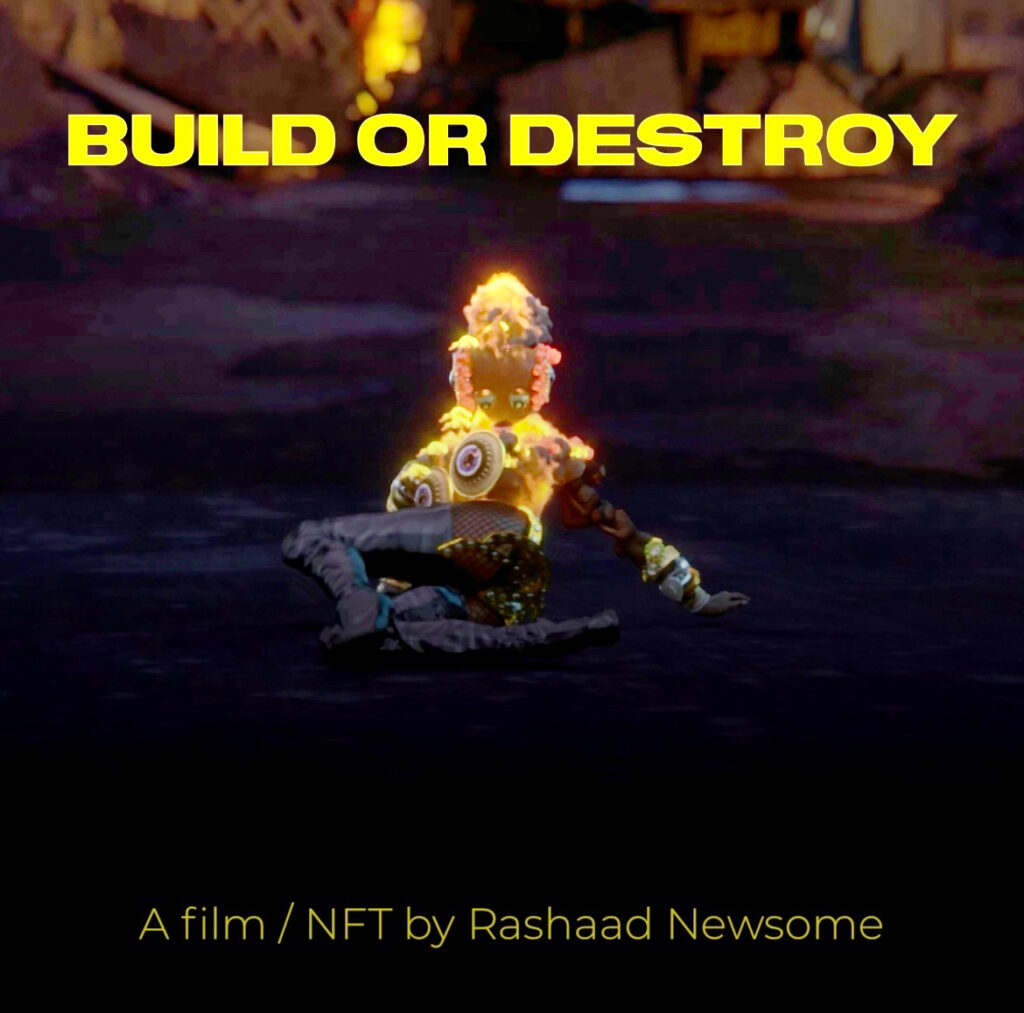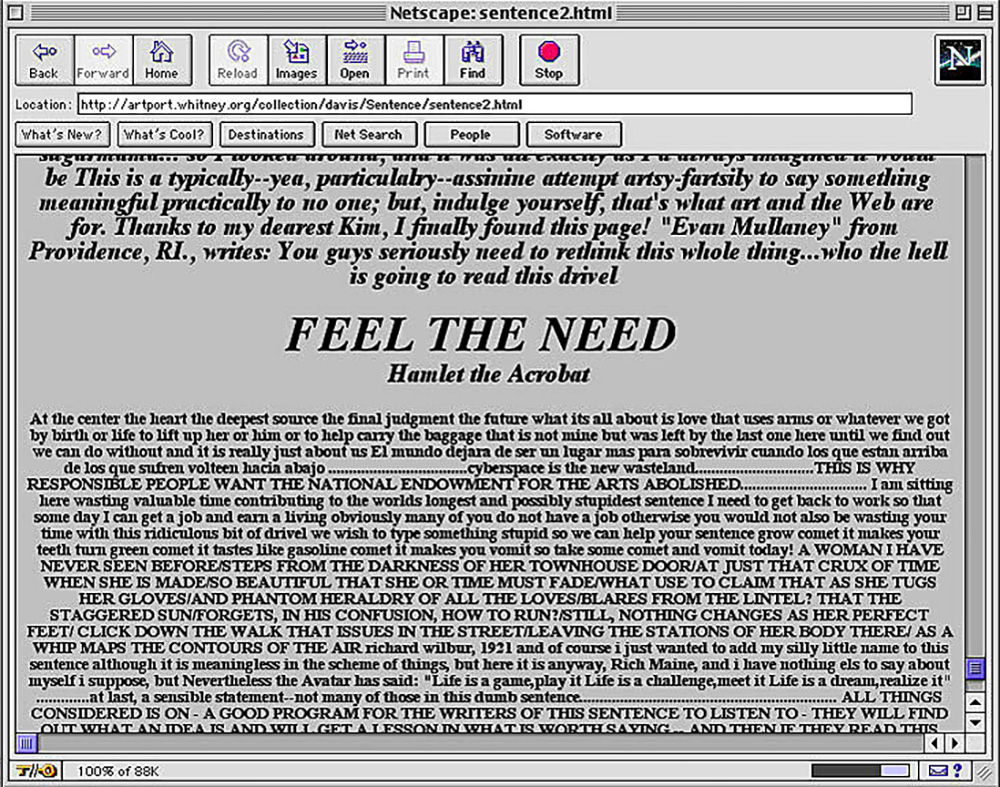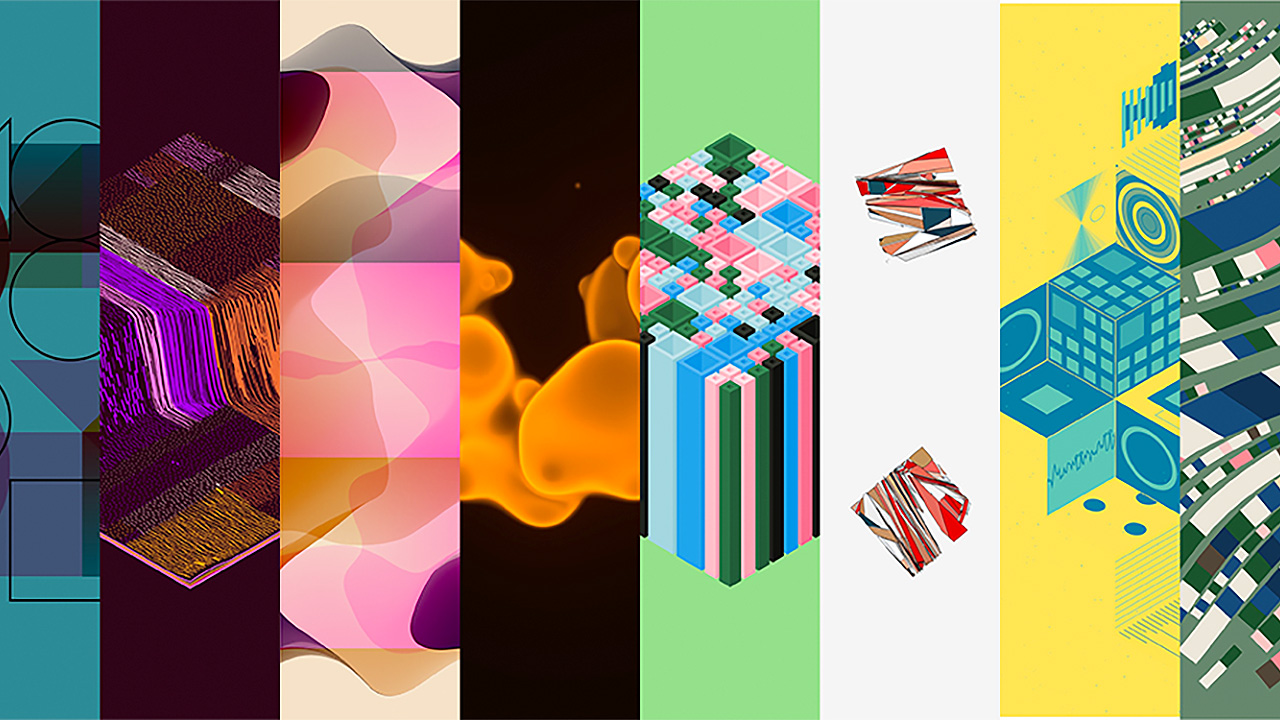NFTs hit big in 2021, and judging by how they’ve ushered in new cultural projects, ideas, and conversations, their impact on 2022 is set to be as sizable. Suitably, the Pérez Art Museum Miami (PAMM) hosted the virtual event, “NFTs: The Next 500 Years,” on November 29 to discuss what’s next for NFT art, particularly as it relates to cultural organizations.
Moderated by Jay Mollica, the museum’s Director of Digital Engagement, the panel included artist Sofia Crespo, Tina Rivers Ryan, Assistant Curator of Albright-Knox Art Gallery, and Jeff Davis, Chief Creative Officer of NFT platform Art Blocks Inc. From their conversation, here are three key considerations for museums looking toward a future with NFTs.
Barriers to NFT acquisition remain

“Build or Destroy,” a video installation and NFT by Rashaad Newsome, commissioned by the San José Museum of Art in 2021. Image: Rashaad Newsome Studio
The ICA Miami has a NFT in its collection and the San José Museum of Art has commissioned a NFT work, but for most other institutions, NFT acquisition remains a process of wait-and-see. “Even if museums did immediately jump on NFTs, we’re talking about something that’s really only come to their attention about six months ago,” says Ryan. “We still may not see those acquisitions for another three months.”
Apart from a drawn-out acquisition process — including identifying an artist of interest, studio visits, market research, negotiations, and putting the acquisition forward for internal approval — Ryan further points out that museums have an obligation to acquire work of long-term cultural significance. And the fact is, despite fetching high auction prices, many NFT artists have not been practicing for long. “A museum can’t always bet on an emerging artist,” she adds. “We like to take our time and to make sure that the what we’re acquiring is something that we are totally convinced will be of that lasting cultural relevance.”
NFTs may be new, but digital art ownership is not

Douglas Davis, “The World’s First Collaborative Sentence,” 1994–, conserved 2012. Image: Whitney Museum of American Art
Then again, it’s not as if digital art does not have a spot in museum collections. Ryan brings up “The World’s First Collaborative Sentence,” a 1994 work by the late artist Douglas Davis that invited early Internet users to contribute to a never-ending sentence. It is currently in the possession of the Whitney Museum of American Art.
“It certainly is the case that digital art has never had the market that it has now, thanks to NFTs,” Ryan says. “It’s certainly the case that it has not been very highly financially valued aspect of contemporary art. But that does not mean that [digital art] was never bought or sold or acquired by private collectors or institutions.” NFTs might expect to follow a similar path into the institution.
Conserving NFT art presents its own set of challenges
Owning and housing digital works, including NFT art, also entails digital conservation. This involves “maintaining document documentation, iteration reports, interviewing the artist to figure out what their wishes are for long term conservation, the degree to which the technology is integral or is mutable or variable,” Ryan says. “It takes a lot of work actually to conserve digital art for the long term.”
And as technology advances, old technology experiences deterioration. “If you think about the resolution you were seeing in video games 10 years ago versus today, you get an understanding of how rapidly screen resolutions have been advancing,” says Mollica, emphasizing the need to further preserve the technology that hosts digital mediums. “Your JPEG may look very crisp today, but 10 years from now, will it still hold up? You can’t really swap a JPEG for the another high-resolution JPEG.”



